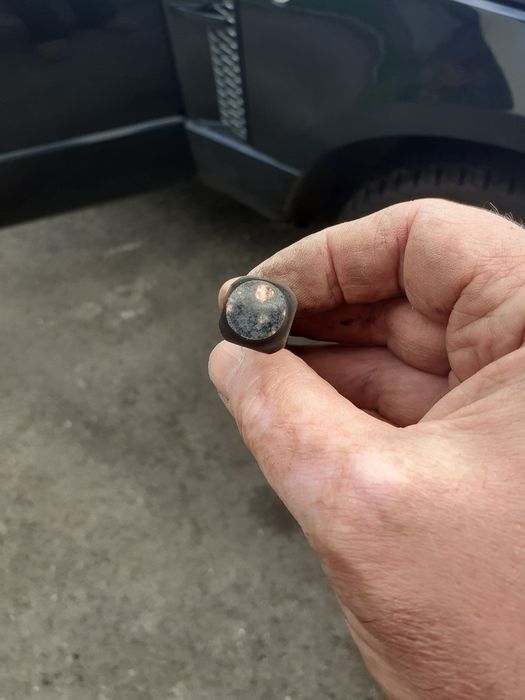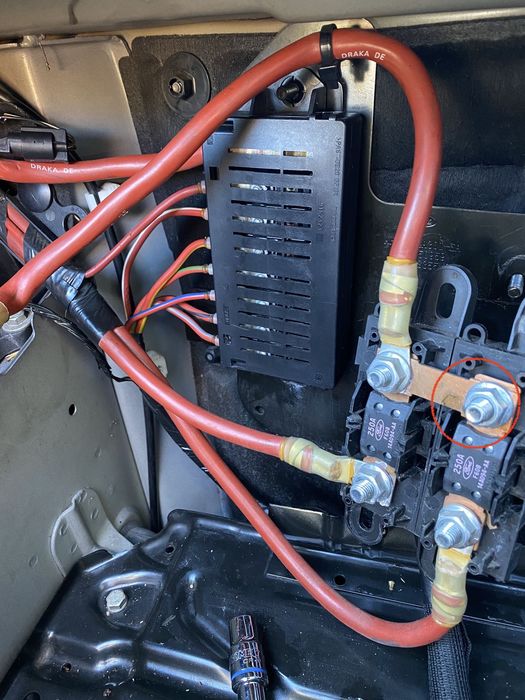 | Home > Technical (L322) > Starter motor replacement L322 TDV8 |
 
|
|
|
| mezo Member Since: 13 Mar 2022 Location: Milton Keynes Posts: 21  
|
Crikey give it a rest. First of all, that cranking screenshot was taken last night after i had deliberately tried to lower the battery voltage to provoke the non start issue and was the fourth stop/start crank in a row.
|
||
|
| mezo Member Since: 13 Mar 2022 Location: Milton Keynes Posts: 21  
|
yes you might be right. Mine wouldn't start yesterday, i was probing around in the relay box to trace the wiring and fuses etc - when i plugged the connectors and relay back in - it started again. I replaced the wire anyway, but it could indeed be between the live feed into the fuse box, the fuse, relay base and the connector.
|
||
|
| misfire84 Member Since: 25 Nov 2020 Location: brecon becons Posts: 37  
|
|
||||
|
| Phoenix Member Since: 16 May 2022 Location: Gone Posts: 1631 
|
Firstly, context and accuracy are critical to resolving issues - or determining behaviour is by design / a characteristic of the system. Secondly, I would but if you look at my vehicle profile, it's not a concern that affects me. So crack on however you like, fella. |
||
|
| stan Site Moderator Member Since: 13 Jul 2010 Location: a moderate moderated moderator moderating moderately in moderation Posts: 34929 
|
mod edit..
|
||
|
| Phoenix Member Since: 16 May 2022 Location: Gone Posts: 1631 
|
I'm familiar with the engine in question, in my view, due to the high inrush current required, I would have sized the cable at 6mm2 and given it a dedicated fused supply to the relay, or ideally twin 70A relays, again, due to the high inrush causing contact arcing. Its possible that the issue may be caused by the starter solenoid piston, fork or drive dog binding which will keep the primary 'pull-in' windings active for longer than design time before the 'hold-in' windings take over, thereby causing heating of the conductor and increase in resistance with the resulting drop in terminal voltage. But all that is just a guess. |
||
|
| ffrr14 Member Since: 21 Apr 2021 Location: Sydney Posts: 187  
|
My observation is inline with your assumptions hence I have introduced a dedicated circuit triggered by the starter relay and the starter seems to love it. Starter solenoid resistance due to thermal deg has crossed my mind, but then again it is a brand new starter! Which leads me to believe the dimensioning is an issues. Car starts fine with fullish battery without mod, but struggles with lower battery SOC* which then impacts starting. * There are other issues impacting SOC here SOLD | Tuned MY 2011.5 Range Rover Autobiography 4.4 TDV8 Orkney Grey | e-diff | ACC New Toy: Unimog U1550L/37 New : G350D |
||
|
| Phoenix Member Since: 16 May 2022 Location: Gone Posts: 1631 
|
I think you have to work on the SoC will be ~75% for any calculations, I've not measured the cold inrush current but it's safe to assume it'll be in the 30-50A range, probably dropping to ~27A once the field is established with a further drop to 12-15A once the starter is fully engaged and spinning - which brings it's own challenges with system voltages, are you getting any transient lost comms ('U' codes) DTC's? if not, then the overall vehicle voltages are remaining at healthy (>10.5VDC) levels and the issue is purely within the engine bay distribution and harness'.
|
||
|
| ffrr14 Member Since: 21 Apr 2021 Location: Sydney Posts: 187  
|
No DTC unless I am working on the car etc. Your thinking resonates, I have replaced all the relays and now separated the solenoid load from the engine distribution box.
|
||
|
| Phoenix Member Since: 16 May 2022 Location: Gone Posts: 1631 
|
If you have access to one, use a high sample rate datalogger or multimeter with min/max recording to measure the PD between the -ve terminal and the engine, move the body measurement point closer to the starter with each test, if there is any detrimental resistive connection or lead, that'll find it.
|
||
|
| Ajmngn Member Since: 25 May 2021 Location: Gloucestershire Posts: 183  
|
Ffrr14 - having literally just been in the battery bay junction boxes this eve cleaning all the contacts, I’m curious as to the nylon flange nuts suggestion. Genuine Q, what’s the advantage of those? Why do you think the standard nuts are a weakness of the system? Every day’s a learning day for me on here. TYIA! Andy
|
||
|
| ffrr14 Member Since: 21 Apr 2021 Location: Sydney Posts: 187  
|
Thanks you, will keep that in mind SOLD | Tuned MY 2011.5 Range Rover Autobiography 4.4 TDV8 Orkney Grey | e-diff | ACC New Toy: Unimog U1550L/37 New : G350D |
||
|
| ffrr14 Member Since: 21 Apr 2021 Location: Sydney Posts: 187  
|
I am hoping the Niloc nuts wont come loose vs the standard ones (I have found one loose, likely due to heat and vibration etc) This is strictly my opinion only
New Toy: Unimog U1550L/37 New : G350D |
||||
|
| Ajmngn Member Since: 25 May 2021 Location: Gloucestershire Posts: 183  
|
Makes sense! TY 👍 Andy
|
||
|
 
|
|
| All times are GMT + 1 Hour |
< Previous Topic | Next Topic > |
Posting Rules
|
Site Copyright © 2006-2024 Futuranet Ltd & Martin Lewis
![]()


